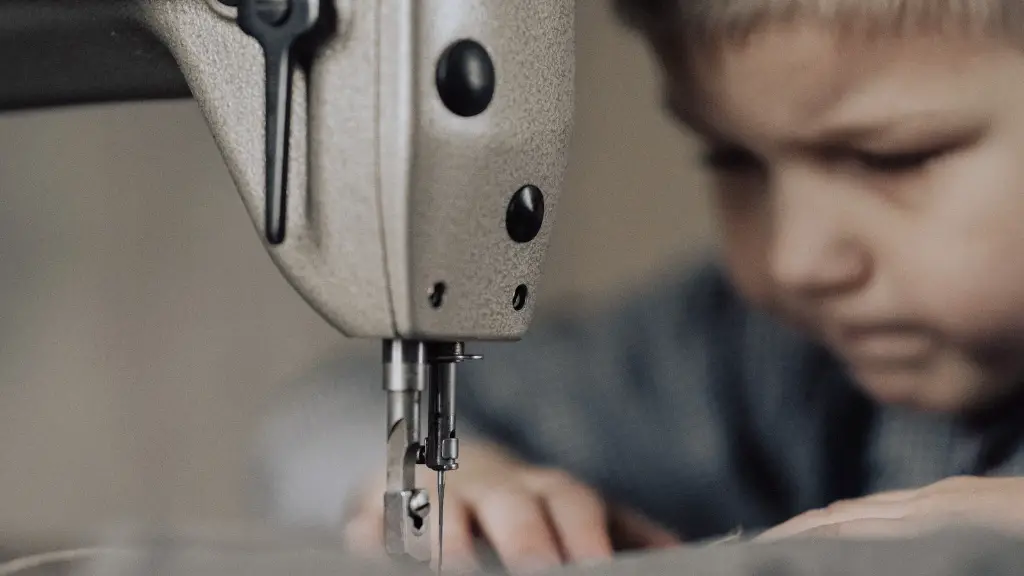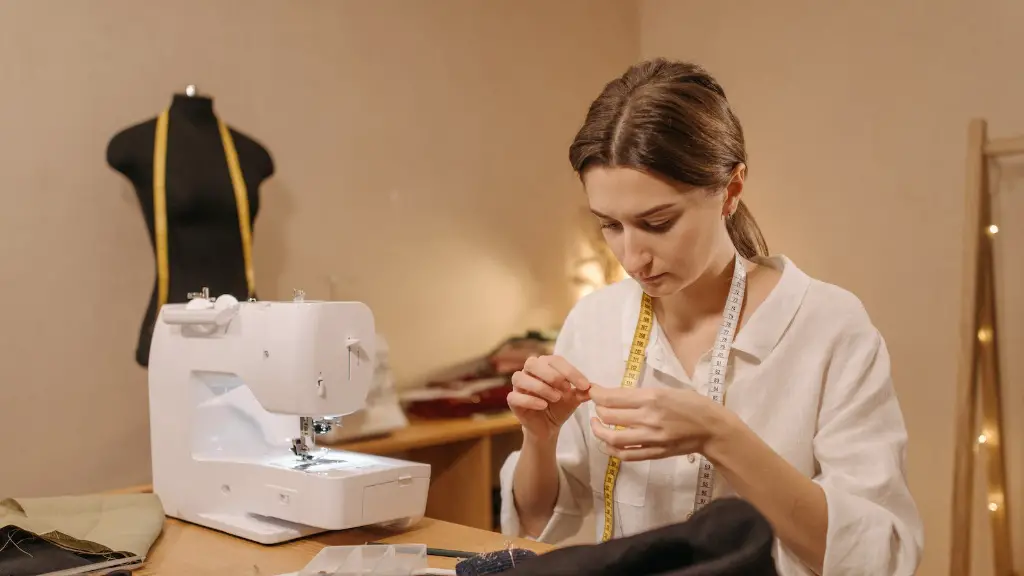Introduction
Sewing machines are an incredibly useful tool for home sewers and craftspeople to create apparel, furnishings, and other items. Whether you’re just beginning to learn how to sew or you’re an experienced seamstress, you’ll inevitably ask yourself the same question: do all sewing machines need oil? In this article, we’ll discuss the answer to this question from an expert’s perspective. We’ll look at the importance of oiling a sewing machine, the types of oil that work best, and the most common mistakes that first-time sewers make when oiling their machines. By the end of this article, you’ll have a better understanding of the benefits of oiling sewing machines and the proper steps to follow to ensure that your machine is running well.
What Is Sewing Machine Oil?
Sewing machine oil is a lubricant made specifically for use in a variety of different machines. It usually consists of mineral oil and other ingredients that help to reduce friction and keep metal parts running smoothly. Some manufacturers also add special ingredients that protect metal from corrosion and help to reduce wear. In addition to lubricating the metal parts of the machine, sewing machine oil also helps to keep dust and other debris from accumulating inside the machine and causing performance issues.
Do Sewing Machines Need Oil?
Absolutely! Sewing machines do need oil to remain in good working order. In fact, over time, friction and wear can cause the metal parts of the machine to become worn and eventually break down. Lubricating them with oil can help to prevent this from happening. In addition, it can help the machine to work more efficiently, ensuring that your sewing projects go as smoothly as possible.
What Are the Benefits of Oiling a Sewing Machine?
There are several benefits to oiling a sewing machine. For one, it can help to prevent corrosion of the metal parts and keep dirt and dust from building up inside the machine. This can result in smoother operation of the machine and fewer performance issues. Another benefit of oiling a sewing machine is that it can help to extend its service life. Regular oiling can keep metal parts free from wear and tear, which can ultimately help to keep your machine running smoothly for longer.
What Type of Oil Should I Use?
It’s important to use the right type of oil for your sewing machine. Generally, it’s best to stick with a lightweight mineral oil, as this is typically the best type for sewing machines. Be sure to check your sewing machine manufacturer’s instructions for the type of oil they recommend. Do not use olive oil or other types of vegetable oils, as these could cause clogs and damage the machine.
Common Mistakes to Avoid When Oiling a Sewing Machine
When oiling a sewing machine, the most common mistake first-time sewers make is using too much oil. Use only a few drops of oil per machine parts, as using more can create a mess and could potentially damage the machine. Another mistake to avoid is using a type of oil that is not recommended by the machine’s manufacturer. Stick with the recommended type and avoid substituting other types of oil.
How Often Should I Oil My Sewing Machine?
Generally, it’s best to oil your sewing machine every six months or so. This will help to keep the metal parts of the machine running smoothly and free from wear and tear. Be sure to check the machine’s manual for specific instructions, as different models may require different maintenance intervals.
How to Troubleshoot Sewing Machines
If your sewing machine is having trouble, the first thing you should do is check the oil level. If it’s low, be sure to add more oil and then see if the problem is solved. If the machine is still experiencing issues, you may want to try cleaning and lubricating the machine. Remove the covers and gently clean all of the metal parts with a lint free cloth and a mild, nonabrasive detergent. Make sure to remove any built-up rust and debris and then oil all of the moving parts with a light weight mineral oil.
What Are the Best Practices When Sewing?
It’s important to practice proper safety measures when working with a sewing machine. First, always use the appropriate needle for the fabric and thread that you’re working with. Second, never leave your machine unattended while running. Third, always make sure to turn off and unplug the machine before cleaning or making any adjustments. And finally, never reach inside the machine while it’s running.
How to Clean and Store Your Sewing Machine Properly
Cleaning your sewing machine is a simple process, but it’s important to do it regularly in order to ensure the machine runs smoothly. Begin by unplugging the machine and using a lint free cloth and a mild, nonabrasive detergent to clean any dust or debris from the metal parts. After cleaning, make sure to oil all of the moving parts with a light weight mineral oil. When cleaning and storing your sewing machine, be sure to keep it out of direct sunlight and away from extreme temperatures.
How to Repair Sewing Machines
If your sewing machine is experiencing issues, you may need to repair it. With certain machines, it’s possible for you to complete these repairs yourself. Be sure to read your machine’s manual for detailed instructions on how to fix different types of issues. If the issue is beyond your scope, it’s best to take your machine to a professional repair shop.
What Are the Most Common Parts in Sewing Machines?
Sewing machines typically consist of several different parts, such as the motor, the needle plate, the bobbin, the shuttle, and the tensioner. The motor powers all of the other parts of the machine, while the needle plate is the base of the machine and where the fabric is manipulated. The bobbin, shuttle, and tensioner are pieces that all help to feed the fabric the right way through the machine and help to create the stitches.
What Are the Different Types of Sewing Machines?
There are multiple types of sewing machines available on the market today. Generally, sewing machines are separated into two categories: mechanical and electronic. Mechanical sewing machines use a series of hand cranks to drive a set of needles that move and create the stitches, while electronic sewing machines are more complex and can be programmed with a variety of stitches.
How to Care for Your Sewing Machine
In order to keep your sewing machine running well, there are certain steps that you should take. First, it’s important to keep the machine clean and oiled regularly. Second, always use the right type of needle and thread for your project. Third, never leave the machine unattended while it’s running. And finally, make sure to turn it off and unplug it before making any adjustments or cleaning the machine.
What Are the Benefits of Buying a High-Quality Sewing Machine?
Investing in a high-quality sewing machine has a lot of benefits. For one, quality machines are usually much more reliable and durable than cheaper models. They’re also more efficient and provide better performance. In addition, many quality machines come with more features, such as adjustable tension and stitch length, to help make sewing easier. And finally, most high-quality machines come with a longer warranty, giving you peace of mind that your machine is covered.
What Are the Top Sewing Machine Brands?
When it comes to buying a sewing machine, the brand is an important factor to consider. Some of the top sewing machine brands include Brother, Janome, Singer, and Juki. Each of these brands offers machines that provide reliable performance and have a range of features. Be sure to read reviews and compare models before making a purchase to ensure that you’re getting the best machine for your needs.
How to Maintain a Sewing Machine For Long Lasting Performance
When it comes to maintaining your sewing machine for long-lasting performance, regular cleaning and proper care are key. Be sure to clean your machine regularly, as this can help to keep it running smoothly and free from dirt and dust. It’s also important to keep the machine properly oiled and to use the recommended type of oil. Additionally, always use the right type of needle and thread when sewing and never leave the machine running unattended. Finally, make sure to turn the machine off and unplug it before making any adjustments.




